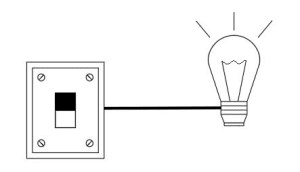PLC stands for “Programmable Logic Controller”. A PLC is a computer specially designed to operate reliably under harsh industrial environments – such as extreme temperatures, wet, dry, and/or dusty conditions. PLCs are used to automate industrial processes such as a manufacturing plant’s assembly line, an ore processing plant, or a wastewater treatment plant.
PLCs share many features of the personal computer you have at home. They both have a power supply, a CPU (Central Processing Unit), inputs and outputs (I/O), memory, and operating software (although it’s a different operating software).
The biggest differences are that a PLC can perform discrete and continuous functions that a PC cannot do, and a PLC is much better suited to rough industrial environments. A PLC can be thought of as a ‘ruggedized’ digital computer that manages the electromechanical processes of an industrial environment.
PLCs play a crucial role in the field of automation, using forming part of a larger SCADA system. A PLC can be programmed according to the operational requirement of the process. In the manufacturing industry, there will be a need for reprogramming due to the change in the nature of production. To overcome this difficulty, PLC-based control systems were introduced. We’ll first discuss PLC basics before looking at various applications of PLCs.
If you want to learn how to program PLCs, you should check out some of the different online PLC training courses. These courses can help jump-start your career in control engineering.
PLC Basics
PLCs were invented by Dick Morley in 1964. Since then PLC has revolutionized the industrial and manufacturing sectors. There is a wide range of PLC functions like timing, counting, calculating, comparing, and processing various analog signals.
The main advantage of PLC over a “hard-wired” control system is that you can go back and change a PLC after you’ve programmed it, at little cost (just the cost of the programmer’s time). In a hard-wired control system, you’re essentially having to rip out wires and start from scratch (which is more expensive and takes longer). Let’s look at an example to better understand this advantage.
Imagine you have a light connected to a switch. In general, the light operates under two conditions – ON and OFF. Now you are given a task that when you turn ON the switch, the light should glow only after 30 seconds. With this hard-wired setup – we’re stuck. The only way to achieve this is to completely rewire our circuit to add a timing relay. That’s a lot of hassle for a minor change.

Comments
Post a Comment